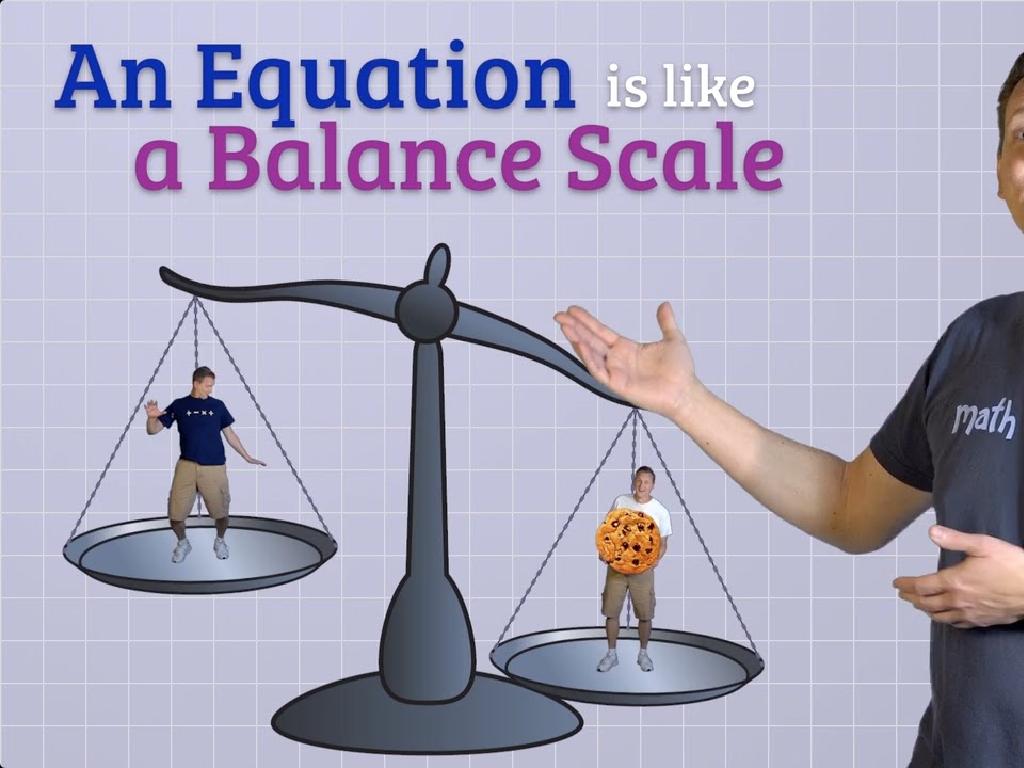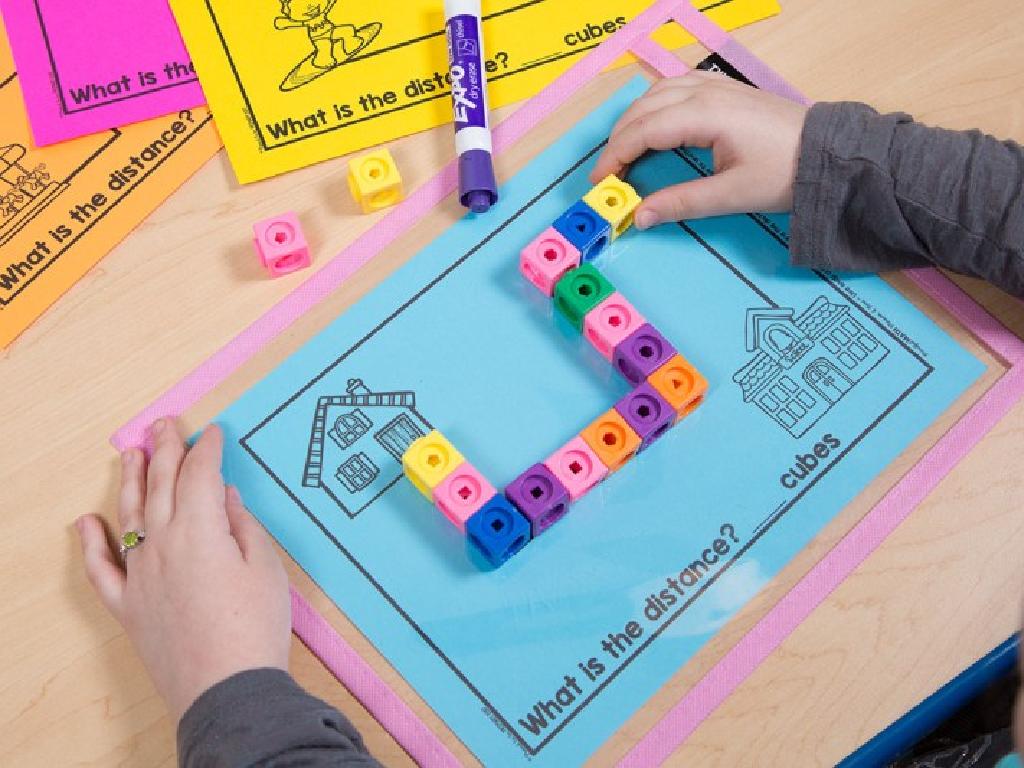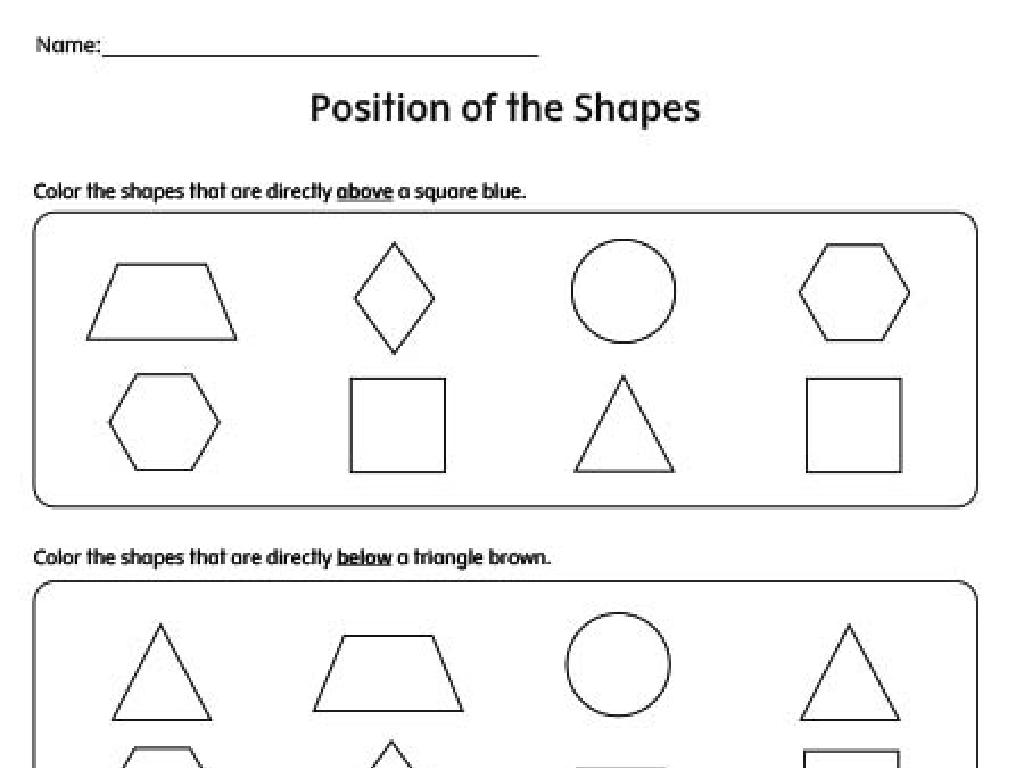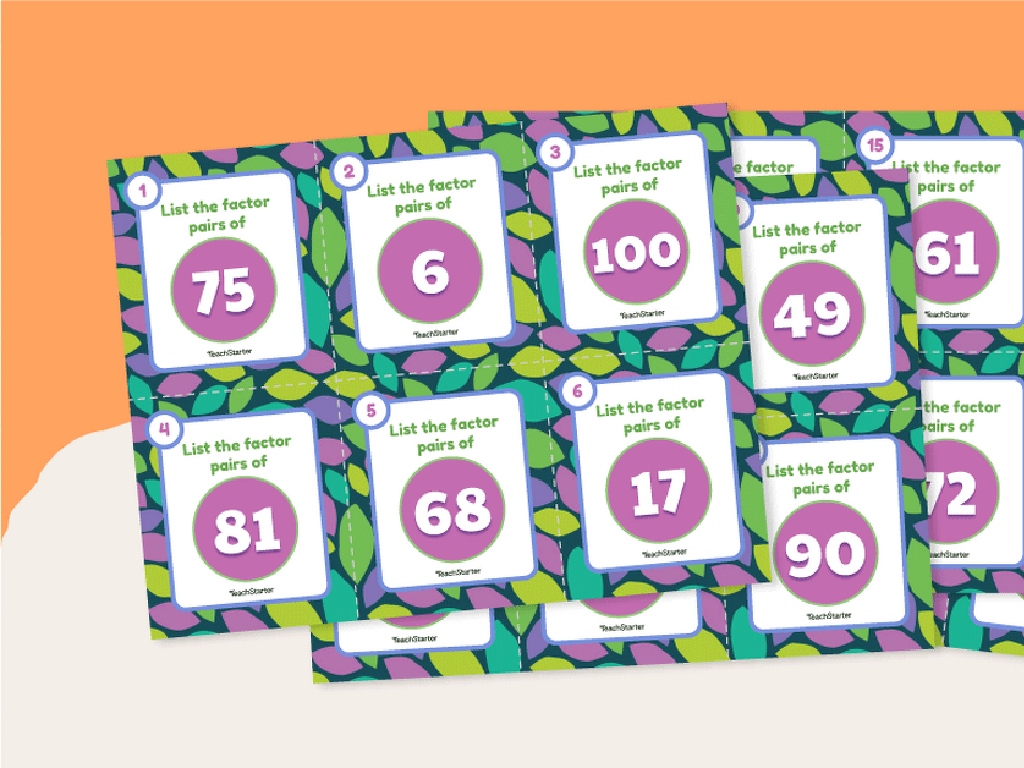Addition And Subtraction Word Problems - Up To 20
Subject: Math
Grade: Second grade
Topic: Mixed Operations Word Problems: One Digit
Please LOG IN to download the presentation. Access is available to registered users only.
View More Content
Math Detectives: Addition & Subtraction Mysteries
– Become a math detective today
– Solve addition and subtraction mysteries
– Use clues to find hidden numbers
– Tackle word problems up to 20
– Read carefully to find if you should add or subtract
– Understand clues in math stories
– Look for keywords that help solve the problem
|
In this class, students will engage in solving addition and subtraction problems presented within the context of word problems. They will learn to identify whether to add or subtract by looking for keywords in the text, such as ‘in total’, ‘altogether’, ‘left’, or ‘after giving away’. Encourage students to visualize the problem and use manipulatives if needed. Prepare a few examples to demonstrate, and then let students try their own. Possible activities include solving problems on the board, working in pairs, or creating their own word problems to challenge classmates.
Understanding Word Problems
– Word problems combine stories and numbers
– Addition: combining groups together
– If you have 3 apples and get 2 more, how many now?
– Subtraction: taking away or comparing
– If you have 5 candies and give away 2, how many left?
– Practice with examples up to 20
– Let’s solve problems using numbers 1 to 20
|
This slide introduces the concept of word problems to second-grade students, emphasizing the use of addition and subtraction within the context of a story. Word problems help students apply math to real-life situations. Addition is used when we want to combine items, and subtraction is used when we want to take items away or find out how much more one group has than another. Encourage students to visualize the problems and use objects or drawings to help them understand. Provide several examples and practice problems to ensure students are comfortable with the concept. Aim to make the session interactive by asking students to come up with their own word problems.
Key Words for Addition Problems
– ‘Total’ means add numbers
– When you see ‘total’, think of putting things together
– ‘In all’ signals addition
– ‘In all’ is used when you count everything
– ‘Together’ combines numbers
– Use ‘together’ when you join groups
– ‘Sum’ equals addition
– ‘Sum’ is the result of adding
|
This slide is aimed at helping second-grade students recognize key words in word problems that indicate the need to add numbers. When students encounter words like ‘total,’ ‘in all,’ ‘together,’ and ‘sum,’ they should understand that these terms are cues to combine numbers to find the answer. It’s crucial to provide examples and practice problems where these words are used in context to solidify their understanding. For instance, ‘Sally has 5 apples, and Tom gives her 3 more. What is the total number of apples?’ Here, ‘total’ tells us to add 5 and 3 to find the answer. Encourage students to highlight or underline these key words in problems to help them decide on the correct operation.
Key Words for Subtraction
– ‘Left’ signals subtraction
– ‘Remain’ means take away
– ‘Less’ indicates subtraction
– ‘Fewer’ points to subtract
|
This slide is aimed at helping second-grade students recognize key words in word problems that signal the need to subtract. When students encounter words like ‘left’, ‘remain’, ‘less’, or ‘fewer’, they should understand that these words are cues to subtract one number from another. For example, if a word problem says ‘5 apples were on the table and 2 were taken away, how many are left?’ – the word ‘left’ indicates that students should perform subtraction (5 – 2). Encourage students to practice by creating their own subtraction word problems using these key words. This will help them become more familiar with the language used in math problems and improve their problem-solving skills.
Solving Word Problems: Addition & Subtraction
– Read the problem thoroughly
– Take your time to read every word
– Grasp the story’s context
– What is happening in the problem?
– Determine: add or subtract?
– Look for keywords like ‘total’ for addition, ‘left’ for subtraction
– Solve the problem step by step
– Use drawings or objects to help visualize the problem
|
This slide is aimed at helping second-grade students approach addition and subtraction word problems methodically. Start by encouraging them to read the problem multiple times to ensure they understand it fully. Discuss the importance of comprehending the story within the problem to relate to it better. Teach them to identify keywords that signal whether to add or subtract, such as ‘in all’, ‘altogether’, ‘remain’, or ‘less than’. Finally, guide them through solving the problem step by step, possibly using visual aids like drawings or physical objects to represent the problem. This will help them to visualize the scenario and decide on the correct operation to use.
Solving Addition Word Problems
– Understand the problem
– Read carefully to know what’s being asked
– Identify numbers to add
– Look for key numbers in the problem: 5 and 3
– Perform the addition
– Add the numbers together: 5 + 3
– Find the total count
– The sum is the total: 8 balls
|
This slide is aimed at helping second-grade students tackle addition word problems by breaking down the process into manageable steps. Start by reading the problem to understand what is being asked. Next, identify the numbers that need to be added – in this case, 5 and 3. Then, perform the addition operation to find the sum. Lastly, conclude with the total count, ensuring that students understand the result represents the final number of items. Reinforce the concept by working through the example provided, and then encourage students to apply these steps to similar problems. Practice with additional problems to build confidence and proficiency.
Solving Subtraction Word Problems
– Understand the problem scenario
– Identify numbers and operations
– Perform the subtraction: 10 – 4
– Subtract the smaller number from the larger
– Find the answer and conclude
– State how many apples are left
|
This slide is aimed at teaching second graders how to approach and solve subtraction word problems with numbers up to 20. Start by reading the problem carefully and understanding the scenario presented. Next, help students identify the numbers involved and the operation required, in this case, subtraction. Walk them through the subtraction process, ensuring they understand that we subtract the smaller number (4 apples) from the larger number (10 apples). Conclude by finding the answer (6 apples) and help them articulate the conclusion of the problem. Encourage students to visualize the problem with actual objects or drawings to aid their comprehension. Provide additional similar problems for practice and ensure they are comfortable with the concept before moving on.
Let’s Practice Together: Addition & Subtraction
– Listen to a word problem
– Identify key words for operations
– Words like ‘total’ or ‘altogether’ might mean add, ‘left’ or ‘fewer’ might mean subtract
– Decide: add or subtract?
– Solve the problem together
– Use counters or drawings to help find the answer
|
This slide is designed for an interactive class activity where the teacher reads a word problem aloud and guides the students through the process of solving it. The focus is on identifying key words that signal whether to add or subtract and working together to find the solution. Encourage students to actively listen and participate in the discussion. Provide manipulatives like counters or allow students to draw pictures to visualize the problem. This hands-on approach helps solidify their understanding of the concepts. Prepare several word problems with varying contexts to ensure all students have the opportunity to engage with the activity.
Class Activity: Math Detective
– Become math detectives today
– Solve word problems in worksheet
– Tackle problems like ‘If you have 5 apples and get 3 more, how many do you have?’
– Look for clues and key words
– Words like ‘in all’, ‘left’, ‘more’ indicate the operation
– Use addition and subtraction
|
In this engaging class activity, students will put on their detective hats to solve addition and subtraction word problems. Provide them with a worksheet filled with various problems that require adding or subtracting numbers up to 20. Encourage them to identify key words such as ‘total’, ‘more than’, ‘less than’, ‘in all’, ‘left’, which will help them determine whether to add or subtract. Offer guidance on how to approach each problem and remind them to double-check their work. For differentiation, consider giving more challenging problems to students who need an extra challenge and simpler ones to those who need more practice. Possible activities include: 1) Pairing up to solve problems, 2) Creating their own word problems, 3) Using manipulatives to visualize the problems, 4) Drawing pictures to represent the problems, 5) Writing a story around the word problem.
Great Work on Word Problems!
– Excellent problem-solving today
– Practice is key – keep it up at home
– Try a few problems each day to improve
– Get ready for more mixed operations
– We’ll tackle adding and subtracting together
– You’re becoming math wizards!
|
This slide is meant to congratulate the students on their hard work during the lesson and to encourage them to continue practicing at home. Emphasize the importance of regular practice to enhance their skills. Let them know that in the upcoming lessons, they will be introduced to more complex concepts involving mixed operations, which will include both addition and subtraction in the same problem. Encourage them to approach these new challenges with the same enthusiasm and confidence they showed today. Provide some simple practice problems for them to take home, and remind them that with each problem they solve, they’re getting better at math.






